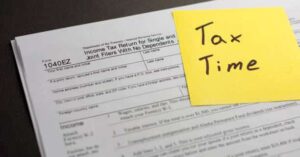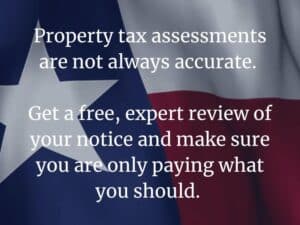Property taxes are a significant expense for homeowners, business owners, and real estate investors, driven by the assessed value of your property as determined by your county appraisal district. When this value exceeds the fair market value—what your property would sell for in a competitive market—you may be overpaying hundreds or thousands of dollars annually. Filing a property tax protest allows you to challenge an inflated assessment, but success hinges on strategy, preparation, and persuasive evidence. This comprehensive guide reveals insider secrets to crafting a winning property tax protest, offering practical steps and expert tips to maximize your savings and navigate the process with confidence.
Why Protest Your Property Taxes?
A successful property tax protest can lower your assessed value, directly reducing your tax bill. For example, cutting a $500,000 assessment by $50,000 at a 2.5% tax rate saves $1,250 annually. Protests also correct errors, secure exemptions, and set a precedent for future valuations, as appraisal districts often base new assessments on prior ones. However, protests require compelling evidence and adherence to strict deadlines (typically May 15 or 30–45 days from your appraisal notice). The secrets below, drawn from industry best practices, will help you build a strong case and avoid common pitfalls.
Top Secrets to a Successful Property Tax Protest
These proven strategies, used by savvy property owners and tax consultants, increase your chances of a favorable outcome:
1. File Your Protest Early
- Why It Works: Filing as soon as you receive your appraisal notice (typically mailed in spring) gives you more time to gather evidence and prepare. Early filing may also secure an earlier hearing slot, when appraisers and Appraisal Review Board (ARB) members are less fatigued.
- How to Do It:
- Review your notice for the assessed value, errors, and protest deadline (often May 15).
- Download the protest form from the appraisal district’s website or request it by mail.
- File online, by mail, or in person, selecting grounds like “value is too high” or “unequal appraisal.”
- Example: Filing by April 20 for a May 15 deadline allows weeks to collect comps, avoiding a last-minute rush.
- Secret Tip: File even if your evidence isn’t complete, as you can submit additional materials later, but missing the deadline locks in the assessment.
2. Gather Bulletproof Comparable Sales (Comps)
- Why It Works: Comps—recent sales of similar properties—are the gold standard for proving your property’s market value is lower than the assessed value. Strong comps align with the district’s valuation principles, making them hard to dispute.
- How to Do It:
- Select 3–5 sales within 6–12 months, as of the valuation date (often January 1).
- Choose properties within a half-mile, with similar square footage, age, bedrooms, bathrooms, and condition.
- Adjust for differences (e.g., subtract $10,000 if a comp has a pool and yours doesn’t).
- Source data from reliable places like Multiple Listing Service (MLS) via a realtor, county sales records, or professional appraisals, not public sites like Zillow.
- Present in a clear table with columns for address, sale price, sale date, features, and adjustments.
- Example: If your home is assessed at $450,000 but three comps sold for $405,000–$415,000, propose a $410,000 value, supported by a table and map.
- Secret Tip: Highlight the closest and most recent comps, as these carry the most weight. Include a map showing their proximity to your property for visual impact.
3. Document Property Condition Issues
- Why It Works: Physical issues like structural damage or outdated systems reduce your property’s market value compared to comps, justifying a lower assessment.
- How to Do It:
- Identify high-impact issues (e.g., leaky roof, cracked foundation, 30-year-old HVAC).
- Take clear, timestamped photos labeled with dates and descriptions (e.g., “Kitchen, outdated cabinets, May 2025”).
- Obtain 1–2 written repair estimates from licensed contractors on official letterhead.
- Compare to comps, explaining why your property’s condition warrants a lower value.
- Example: A $15,000 foundation repair estimate, with photos, supports reducing your $420,000 assessment to $405,000 if comps are in better condition.
- Secret Tip: Focus on costly, buyer-noticeable issues (e.g., roof, HVAC) over minor cosmetics (e.g., worn paint), as they have greater impact on value.
4. Leverage Unequal Appraisal Arguments
- Why It Works: In states like Texas, you can argue your property is assessed higher than similar properties, violating the “equal and uniform” principle, even if the market value is accurate.
- How to Do It:
- Find 5–10 properties in your neighborhood with similar size, age, and type, but lower assessments.
- Use the appraisal district’s online database for accurate assessment data.
- Adjust for minor differences (e.g., a slightly larger lot) to ensure fairness.
- Present in a table comparing your assessment to others.
- Example: If your home is assessed at $430,000 but five similar homes are at $390,000–$400,000, argue for a $395,000 value.
- Secret Tip: Combine unequal appraisal with market value arguments for a dual approach, increasing your chances of a reduction.
5. Correct Appraisal Errors
- Why It Works: Errors in the district’s records (e.g., wrong square footage, extra bedrooms) can inflate your assessment, and correcting them is a straightforward way to lower your value.
- How to Do It:
- Review your property record on the district’s website or notice for details like square footage, lot size, and features.
- Compare to your deed, survey, or blueprints.
- Provide proof (e.g., a survey showing 2,300 sq ft vs. the district’s 2,500 sq ft) to the district or include in your protest.
- Example: Correcting a 200-square-foot overstatement at $150 per square foot reduces your value by $30,000, saving $750 at a 2.5% tax rate.
- Secret Tip: Request a field inspection if you suspect errors the district hasn’t documented, as appraisers may rely on outdated data.
6. Organize Evidence Like a Pro
- Why It Works: A well-organized evidence packet makes your case clear and persuasive, respecting the limited time of appraisers and ARB members (typically 15–30 minutes per hearing).
- How to Do It:
- Compile a binder or digital folder with:
- A one-page summary proposing your requested value (e.g., “I request a $400,000 value based on comps and condition”).
- Tables for comps, unequal appraisals, and errors.
- Photos and repair estimates with clear labels.
- Maps showing comps’ locations.
- Market trend data (e.g., a report showing a 5% price drop) as supplementary evidence.
- Use simple visuals (e.g., charts, highlighted maps) to emphasize key points.
- Bring extra copies for the appraiser, ARB, and your records.
- Compile a binder or digital folder with:
- Example: A binder with a comp table, foundation photos, and a $395,000 proposal convinces the ARB to lower a $435,000 assessment.
- Secret Tip: Start with your strongest evidence (e.g., comps) and keep your summary to one page to maintain focus.
7. Master the Informal Review
- Why It Works: Many protests are resolved during the informal review with an appraiser, saving time and effort compared to a formal ARB hearing.
- How to Do It:
- Schedule the review (in person, by phone, or online) after filing your protest.
- Present your evidence in 10–15 minutes, focusing on comps, errors, or condition issues.
- Be polite and data-driven, avoiding emotional arguments (e.g., “Taxes are too high!”).
- Negotiate calmly; appraisers often have authority to offer reductions.
- Example: Presenting three comps at $405,000–$415,000 and a $10,000 repair estimate convinces the appraiser to lower a $450,000 assessment to $415,000.
- Secret Tip: Ask the appraiser what evidence they find most compelling if they don’t agree, using their feedback to strengthen your ARB case if needed.
8. Shine at the ARB Hearing
- Why It Works: The ARB, an independent panel, offers a fresh review of your case, and a polished presentation can sway their decision.
- How to Do It:
- Prepare a 5–7 minute presentation summarizing your evidence (e.g., “My comps show a $400,000 value, and my property needs $15,000 in repairs”).
- Use visuals like tables, maps, or photos to make data clear.
- Answer questions calmly, sticking to facts (e.g., “These comps are from my neighborhood, sold within 6 months”).
- Avoid arguing with the ARB or appraiser; focus on your evidence.
- Example: A clear presentation with comps, a repair estimate, and an unequal appraisal table secures a $40,000 reduction from $460,000 to $420,000.
- Secret Tip: Practice your presentation with a timer and anticipate questions like “Why did you choose these comps?” or “How recent are your repairs?”
9. Consider a Professional for Complex Cases
- Why It Works: Property tax consultants or appraisers bring expertise, access to premium data (e.g., MLS, CoStar), and polished presentations, especially for high-value or commercial properties.
- How to Do It:
- Hire a Consultant: Choose one with local experience and a contingency fee (e.g., 30–50% of savings). See our blog post, “How to Choose the Right Property Tax Consultant.”
- Hire an Appraiser: A professional appraisal ($300–$600) provides a market value estimate, ideal for unique properties.
- Weigh costs vs. savings: A $500 fee is worth it for $2,000 yearly savings.
- Example: A consultant uses MLS comps to reduce a $1M commercial property by $100,000, saving $2,500 annually, with a $1,000 fee.
- Secret Tip: Ask consultants for their success rate and ARB experience to ensure they’re effective at hearings.
10. Follow Up and Plan for Next Year
- Why It Works: Following up ensures your reduction is applied, and saving evidence prepares you for future protests, as valuations often recur.
- How to Do It:
- Check the district’s website or decision letter to confirm the new value.
- Contact the district if errors persist in the final assessment.
- Save your evidence packet for next year’s protest, updating comps and condition data.
- Monitor your appraisal notice annually to catch issues early.
- Example: After a $30,000 reduction, you verify the $410,000 value online and reuse comps next year to maintain a fair assessment.
- Secret Tip: Apply for exemptions (e.g., homestead) post-protest to further lower your taxable value, saving hundreds more.
Common Mistakes to Avoid
- Missing Deadlines: File by May 15 or within 30–45 days of your notice, as extensions are rare.
- Using Weak Comps: Avoid sales over 12 months old, too far away, or dissimilar (e.g., a condo vs. your house).
- Ignoring Adjustments: Failing to adjust comps for differences weakens your case.
- Overloading Evidence: Presenting 10+ comps or irrelevant data dilutes your argument; stick to 3–5 strong pieces.
- Being Unprepared: Disorganized evidence or unrehearsed presentations reduce credibility.
- Skipping Informal Review: Many reductions happen here, so don’t bypass it for the ARB.
Real-World Example
Consider David, whose home is assessed at $480,000, but he believes it’s worth $430,000. He applies these secrets:
- Files Early: Submits his protest by April 25, giving him weeks to prepare.
- Gathers Comps: Finds three homes sold for $425,000–$435,000 within a quarter-mile, adjusting one by $5,000 for a garage.
- Documents Condition: Includes photos and a $12,000 HVAC repair estimate.
- Checks Errors: Corrects a 2,600 sq ft record to 2,400 sq ft, worth $30,000.
- Organizes Evidence: Creates a binder with a summary, comp table, photos, and a map.
- Informal Review: Convinces the appraiser to lower the value to $435,000, saving $1,125 at a 2.5% tax rate.
- Follows Up: Verifies the new value online and applies for a homestead exemption, saving another $1,250.
David’s strategic approach saves $2,375 annually and prepares him for future protests.
Why These Secrets Work
These strategies align with the appraisal district’s valuation methods, leveraging objective data (comps, assessments) and verifiable issues (condition, errors) to build a persuasive case. They maximize your chances of a reduction by addressing both market value and fairness, while thorough preparation ensures you stand out in time-constrained reviews. Even a partial reduction can yield long-term savings, especially for high-value properties.
Taking the First Step
Start your property tax protest by reviewing your appraisal notice for errors or overvaluations. Gather 3–5 comps from reliable sources like MLS or county records, document property issues with photos and estimates, and check for unequal appraisals or errors on the district’s website. File your protest by the deadline (typically May 15 or 30–45 days from the notice) and prepare a clear, organized presentation. For complex cases, consider a property tax consultant to enhance your case with expert data and advocacy.
For more details, visit your county appraisal district’s website or contact their office for protest forms, deadlines, and resources. Unlock these secrets to a successful property tax protest and keep your tax bill fair.
Disclaimer: Property tax laws and procedures vary by state and county. Always verify local rules with your appraisal district or a qualified professional. This guide is for informational purposes and does not constitute legal advice.






